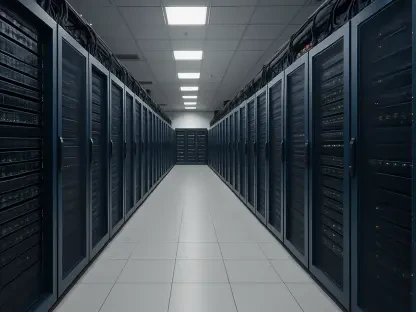In an era where cyber threats loom larger than ever, Microsoft’s latest Patch Tuesday update for August has arrived as a critical line of defense, addressing a staggering 111 unique security vulnerabilities that could undermine system integrity across countless organizations. This month’s release has captured significant attention due to the overwhelming presence of elevation-of-privilege (EoP) flaws, which account for a substantial portion of the issues patched. These vulnerabilities are particularly alarming as they empower attackers to escalate their access from a minor breach to complete administrative control, creating a potential gateway to catastrophic breaches. With the digital landscape becoming increasingly complex, this update serves as a stark reminder of the relentless challenges faced by IT security teams. It highlights the urgent need for vigilance and swift action to protect critical infrastructure from exploitation by malicious actors seeking to exploit these dangerous flaws.
Unpacking the Surge of Elevation-of-Privilege Issues
The spotlight this month falls on the 44 EoP vulnerabilities, representing nearly 39% of the total issues addressed in the update. These flaws pose a severe threat because they enable attackers to transform a small security gap into full control over a system, often bypassing initial defenses with devastating effect. Among the most critical is CVE-2025-53767 in Azure OpenAI, which carries a perfect CVSS score of 10.00, signaling its extreme severity. Another notable flaw, CVE-2025-53779, known as BadSuccessor, affects Windows Kerberos with a CVSS score of 7.2. While Microsoft has mitigated some of these issues directly, the sheer number of EoP vulnerabilities underscores a persistent and evolving challenge for cybersecurity professionals tasked with safeguarding sensitive environments against such high-stakes risks.
Beyond the headline-grabbing flaws, specific EoP issues target widely used systems like Windows Hyper-V and Microsoft SQL Server, amplifying their potential impact. CVE-2025-53155 in Hyper-V, with a CVSS score of 7.8, and four separate SQL Server vulnerabilities, each rated at 8.8, demonstrate how attackers could exploit mechanisms like SQL injection to escalate privileges. These vulnerabilities demand immediate attention from IT teams, especially in environments where these systems are integral to operations. Prioritizing patches for these flaws is essential to prevent unauthorized access to critical infrastructure, as a single lapse could lead to widespread compromise of data and resources that organizations rely on daily.
Addressing Severe Remote Code Execution Dangers
Another pressing concern in this update is the presence of 34 remote code execution (RCE) vulnerabilities, many of which are classified as critical due to their ability to be exploited without any user interaction. High-severity flaws such as CVE-2025-50165 in the Windows Graphics Component and CVE-2025-53766 in the GDI+ interface stand out with near-maximum CVSS scores of 9.8. These issues are particularly dangerous because they allow attackers to execute malicious code remotely, potentially leading to complete system takeover without the need for a user to click a link or open a file. Such vulnerabilities highlight the urgent need for organizations to apply patches swiftly to mitigate risks that could disrupt operations on a massive scale.
Adding to the complexity of RCE threats is CVE-2025-49712 in SharePoint, which carries a CVSS score of 8.8 and poses a significant risk when combined with authentication bypass techniques. Security experts have flagged this flaw as a potential vector for full server compromise, making it a top priority for organizations that depend on SharePoint for collaboration and data management. The ability of attackers to chain this vulnerability with other exploits underscores the importance of a comprehensive security strategy. Companies must not only patch this issue promptly but also review access controls to ensure that even if an initial breach occurs, the damage remains contained.
Navigating New Threats in AI and Cloud Platforms
As technology continues to advance, the attack surface expands into emerging domains like artificial intelligence and cloud services, a trend evident in this month’s update. Vulnerabilities such as CVE-2025-53773 affecting GitHub Copilot and Visual Studio, along with CVE-2025-53792 in Azure Portal, rated at a CVSS score of 9.1, reveal the risks inherent in these cutting-edge tools. Microsoft has taken proactive steps to mitigate several of these flaws at the source, alleviating some immediate pressure on end users. However, their presence signals a broader shift in the cybersecurity landscape, where innovative technologies become prime targets for exploitation by sophisticated adversaries.
Even with Microsoft’s mitigations, the vulnerabilities in AI and cloud environments emphasize the need for heightened security protocols as enterprises increasingly integrate these solutions into their workflows. IT teams must remain proactive, monitoring for any signs of compromise even in areas where patches are not immediately required. The reliance on cloud infrastructure and AI-driven tools for operational efficiency cannot come at the expense of security. Ensuring robust defenses in these domains is critical to prevent attackers from exploiting flaws that could disrupt services or expose sensitive data, especially as adoption of such technologies continues to grow.
Strategic Steps for Robust Cybersecurity Defense
Reflecting on the August update, it becomes clear that the dominance of EoP flaws, alongside critical RCE vulnerabilities, demands immediate and decisive action from organizations worldwide. The response to these 111 patched issues highlights the importance of rapid deployment of security fixes to prevent potential system takeovers. IT teams must prioritize vulnerabilities with high CVSS scores, ensuring that the most severe threats are addressed without delay to protect essential infrastructure from malicious exploitation.
Looking ahead, organizations must adopt a multi-layered approach to cybersecurity, combining timely patching with additional safeguards like network segmentation and strict access controls. Implementing tools such as web application firewalls and validating user queries can serve as interim measures for systems that cannot be updated immediately. Staying informed about evolving threats in AI and cloud technologies will also be crucial as these areas become central to business operations. By fostering a culture of proactive defense, companies can better navigate the complex and ever-changing landscape of digital security risks.









